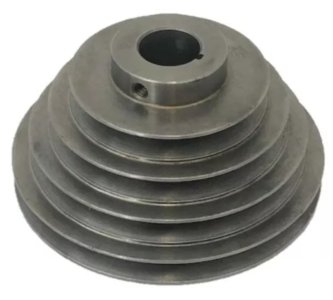@Susquatch : can you make a custom pulley?
I've done it before. Made a big pulley for a large 100 hp flail mower. Turned out great but...... the bar I made it from cost a fortune and I ended up with a barrel of swarf. Probably the most swarf I ever produced on any job.
The Keyway would be an issue too. Never tried broaching and don't have the tools for it.
But you make a good point. If I found a bigger pulley than I need, I could always turn it down. Prolly need to stay away from castings too.

